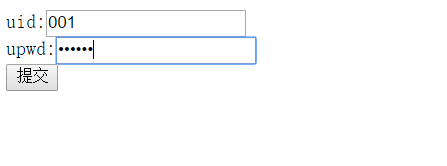1.首先思考:我们想一个用户对应多个菜单
然后一个菜单可以对应多个用户
其实这就是user与menu的多对多的关系
思路:
1、菜单不同的原因在于,利用不同menuid进行查询,原本默认查询的是所有菜单,是通过-1去查的;
2、menuid由来:是登录用户id查询中间表数据所得来的
下面进行代码验证:
先修改menuDao
这里增加了一个 listMenuSef,利用不同menuid进行查询,这样就不会影响其他的方法好了思路的第一步完成了
package com.zrh.dao;
import java.sql.SQLException;
import java.util.ArrayList;
import java.util.HashMap;
import java.util.List;
import java.util.Map;
import com.zrh.entity.TreeNode;
import com.zrh.util.JsonBaseDao;
import com.zrh.util.JsonUtils;
import com.zrh.util.PageBean;
import com.zrh.util.StringUtils;
public class MenuDao extends JsonBaseDao {
/**
*
* @param map req.getParameterMap
* @param pageBean 分页
* @return
* @throws SQLException
* @throws IllegalAccessException
* @throws InstantiationException
*/
public List<TreeNode> list(Map<String, String[]> map,PageBean pageBean) throws InstantiationException, IllegalAccessException, SQLException{
List<Map<String, Object>> listMenu = this.listMenuSef(map, pageBean);
List<TreeNode> treeNodeList = new ArrayList<>();
menuList2TreeNodeList(listMenu,treeNodeList);
return treeNodeList;
}
public List<Map<String, Object>> listMenuSef(Map<String, String[]> map,PageBean pageBean) throws InstantiationException, IllegalAccessException, SQLException{
String sql ="select * from t_easyui_menu where true";
String id = JsonUtils.getParamVal(map, "menuHid");
if(StringUtils.isNotBlank(id)) {
sql = sql + " and Menuid in ("+id+") ";
}else {
sql = sql + " and Menuid = -1";
}
return super.executeQuery(sql, pageBean);
}
/**
* 查询menu表的数据
* @param map
* @param pageBean
* @return
* @throws SQLException
* @throws IllegalAccessException
* @throws InstantiationException
*/
//查东西不一定返回对象 可以返回map集合 JsonUtils是jquery里的工具类
public List<Map<String, Object>> listMenu(Map<String, String[]> map,PageBean pageBean) throws InstantiationException, IllegalAccessException, SQLException{
String sql ="select * from t_easyui_menu where true";
// String id = JsonUtils.getParamVal(map, "id");//首先拿到当前节点的id
String id = JsonUtils.getParamVal(map, "id");
if(StringUtils.isNotBlank(id)) {
sql = sql + " and parentid = "+id;
}else {
sql = sql + " and parentid = -1";
}
return super.executeQuery(sql, pageBean);
}
/**
* menu表的数据不符合easyui树形展示的数据格式
* 需要转换成easyUI所能识别的数据
* @param map
* @param treeNode
* @throws SQLException
* @throws IllegalAccessException
* @throws InstantiationException
*/
private void menu2TreeNode(Map<String, Object> map,TreeNode treeNode) throws InstantiationException, IllegalAccessException, SQLException {
treeNode.setId(map.get("Menuid").toString());
treeNode.setText(map.get("Menuname").toString());
treeNode.setAttributes(map);
Map<String, String[]> jspMap = new HashMap<>();
jspMap.put("id", new String[] {treeNode.getId()});
List<Map<String, Object>> listMenu = this.listMenu(jspMap, null);
List<TreeNode> treeNodeList = new ArrayList<>();
menuList2TreeNodeList(listMenu,treeNodeList);
treeNode.setChildren(treeNodeList);
}
private void menuList2TreeNodeList(List<Map<String, Object>> mapList,List<TreeNode> treeNodeList) throws InstantiationException, IllegalAccessException, SQLException {
TreeNode treeNode = null;
for (Map<String, Object> map : mapList) {
treeNode = new TreeNode();
menu2TreeNode(map,treeNode);
treeNodeList.add(treeNode);
}
}
}
2、menuid由来:是登录用户id查询中间表数据所得来的
先写一个方法UserDao用来查询,第一个是登录查询用户表,第二个是通过中间表查询登录用户所对应的权限
package com.zrh.dao;
import java.sql.SQLException;
import java.util.List;
import java.util.Map;
import com.zrh.util.JsonBaseDao;
import com.zrh.util.JsonUtils;
import com.zrh.util.PageBean;
import com.zrh.util.StringUtils;
public class UserDao extends JsonBaseDao {
public List<Map<String, Object>> list(Map<String, String[]> paMap,PageBean pageBean) throws InstantiationException, IllegalAccessException, SQLException{
String sql = "select * from t_easyui_user_version2 where true";
String uid = JsonUtils.getParamVal(paMap, "uid");
String upwd = JsonUtils.getParamVal(paMap, "upwd");
if(StringUtils.isNotBlank(uid)) {
sql = sql + " and uid = "+uid;
}
if(StringUtils.isNotBlank(upwd)) {
sql = sql + " and upwd = "+upwd;
}
return super.executeQuery(sql, pageBean);
}
/**
* 通过中间表查询登录用户所对应的权限
* @param paMap
* @param pageBean
* @return
* @throws InstantiationException
* @throws IllegalAccessException
* @throws SQLException
*/
public List<Map<String, Object>> listMenu(String uid,PageBean pageBean) throws InstantiationException, IllegalAccessException, SQLException{
String sql = "select * from t_easyui_usermenu where true";
if(StringUtils.isNotBlank(uid)) {
sql = sql + " and uid = "+uid;
}
return super.executeQuery(sql, pageBean);
}
}
然后写一个UserAction
可以自动调用
package com.zrh.web;
import java.util.List;
import java.util.Map;
import javax.servlet.http.HttpServletRequest;
import javax.servlet.http.HttpServletResponse;
import com.zking.framework.ActionSupport;
import com.zrh.dao.UserDao;
public class UserAction extends ActionSupport {
private UserDao userDao = new UserDao();
public String login(HttpServletRequest req,HttpServletResponse resp) {
try {
List<Map<String, Object>> list = this.userDao.list(req.getParameterMap(), null);
if(list != null && list.size() > 0) {
//listMenu查出来的是中间表对应的所有权限
List<Map<String, Object>> listMenu = this.userDao.listMenu(req.getParameter("uid"), null);
StringBuilder sb = new StringBuilder();
for (Map<String, Object> map : listMenu) {
sb.append(","+map.get("menuId"));
}
req.setAttribute("menuHid", sb.substring(1));
}else {
return "login";
}
} catch (Exception e) {
e.printStackTrace();
}
return "index";
}
}
去mvc.xml配置下,代码如下
<action path="/userAction" type="com.zrh.web.UserAction">
<forward name="index" path="/index.jsp" redirect="false" />
</action>
完了之后写一个登录界面
<%@ page language="java" contentType="text/html; charset=UTF-8"
pageEncoding="UTF-8"%>
<!DOCTYPE html PUBLIC "-//W3C//DTD HTML 4.01 Transitional//EN" "http://www.w3.org/TR/html4/loose.dtd">
<html>
<head>
<meta http-equiv="Content-Type" content="text/html; charset=UTF-8">
<title>Insert title here</title>
</head>
<body>
<form action="${pageContext.request.contextPath }/userAction.action?methoName=login" method="post">
uid:<input type="text" name="uid"><br>
upwd:<input type="password" name="upwd"><br>
<input type="submit" ><br>
</form>
</body>
</html>
输出结果为:
登录界面:
登录进去后,进入主界面:
总结:
分了权限之后,每个用户登录后都可以跳到不同界面去,解决了一个菜单不能对应多个用户的问题。

